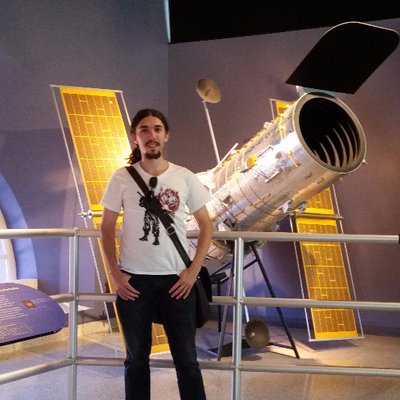Current projects
Near-field cosmology with southern group dwarf galaxies
In this project we are carrying out a search for very faint, hitherto undetected dwarf galaxy members of the southern groups of galaxies in Sculptor and Centaurus. The search, done in collaboration with Dr. Helmut Jerjen of the Australian National University, is based on dedicated observations with the wide-field CCD camera of the SkyMapper telescope in Siding Spring, Australia.
A sky area of totally 750 square degrees covering essential parts of the two groups is being imaged down to significantly fainter magnitudes than previously reached by photographic surveys. Drawing on direct inspection of the deep CCD frames, backed by the application of special filtering techniques which are currently being developed. Multicolor surface photometry and profile modelling for the new, as well as the previously known dwarf members will yield a complete set of structural parameters for the galaxies. The SkyMapper data will be supplemented by data from the DECam (Dark Energy Camera) at Cerro Tololo Observatory in Chile.
The main scientific questions addressed in collaboration with Dr. Marcel Pawlowski are the following: We will trace the luminosity function of galaxies to very faint magnitudes and use its faint end to put constraints on the processes of baryon settlement in DM minihalos. We will search for anisotropies in the (projected) spatial distribution of the new and old dwarfs in the groups; such anisotropies are known to exist in the dwarf satellite members of the Local Group, constituting a major challenge to the standard ΛCDM scenario of structure formation. Last but not least, the newly discovered dwarfs will also provide important targets for follow-up studies. This project is almost done and lead to the four publications Müller et al. (2015, 2016, 2017a, 2018).
TRGB distance measurements of Cen A dwarf galaxies
Follow-up measurements of our newly detected dwarf galaxies are conducted with the Very Large Telescope (VLT) at Cerro Paranal in collaboration with Dr. Marina Rejkuba of the European Southern Observatory (ESO) and Dr. Helmut Jerjen. This new distance measurements will give better statistics on the existence of the discovered planes of satellites in the Centaurus Group. Are there two almost parallel planes of dwarf galaxies (Tully et al. 2015) or are is one of the two planes just an artifact from low number statistics (Müller et al. 2016)? And how do they fit into the plane?
Dwarf galaxy survey in the Local Universe
Together with the Master student Roberto Scalera we survey nearby group of galaxies, beginning with the M101 complex, using the public data from the Sloan Digital Sky Survey (SDSS) (Müller et al. 2017b) and whatever data we can exploit (DES, KiDS, ATLAS and more).
Correlation of number of satellites and bulge index of spiral galaxies
In collaboration with Dr. Behnam Javanmardi we study the puzzling correlation of the number of dwarf galaxies and the size of the bulge of the host galaxy. In the standard model of cosmology such correlations are not predicted as the number of dwarfs should only correlate with the dark matter mass of the host and not the size of the bulge. The bulge itself is thought to be created in major mergers, so it shouldn't affect the census of dwarf galaxies. However, in an alternative cosmology (e.g. MOND) such correlations are predicted, as the dwarf galaxies form in tidal interaction events, the same events that form bulges, i.e. the more past interaction a galaxy had, the more dwarf galaxies were created and the larger the bulge.
Fields of interest
I am broadly interested in many topics in astronomy and cosmology, including anisotropies in the distribution of dwarf galaxies, co-rotating planes of satellites, dark matter, Modified Newton Dynamics (MOND), Archeoastronomy and more.
Publications
Müller O., Jerjen H., Binggeli B. (2015), "New dwarf galaxy candidates in the Centaurus group.", A&A, 583, A79.
Müller O., Jerjen H., Pawlowski M., Binggeli B. (2016), "Testing the two planes of satellites in the Centaurus group.", A&A, 595, A119.
Müller O., Jerjen H., Binggeli B. (2017a), "New low surface brightness dwarf galaxies in the Centaurus group.", A&A, 597, A7.
Müller O., Scalera R., Binggeli B., Jerjen H. (2017b), "The M101 group complex: new dwarf galaxy candidates and spatial structure.", A&A, 602, A119.
Müller O., Pawlowski M., Jerjen H., Lelli F. (2018), "A whirling plane of satellite galaxies around Centaurus A challenges cold dark matter cosmology", accepted for publication in Science and highlighted on the cover of the issue, Science, 359, 534.
Müller O., Rejkuba M., Jerjen H., "Distances from the tip of the red giant branch to the dwarf galaxies dw1335-29 and dw1340-30 in the Centaurus group", accepted for publication in A&A.
Müller O., Jerjen H., Binggeli B., "The Leo-I group: new dwarf galaxy and UDG candidates.", accepted for publication in A&A.
Jerjen H. & Müller O., "The Stellar Population of the Milky Way Dwarf Satellite Boötes II", to be submitted to APJ.
Conferences, Seminars & Colloquia
EWASS 2015 in Tenerife.
13th Potsdam Thinkshop "Near Field Cosmology" 2016 in Obergurgl (Talk).
Swiss Cosmology Days 2017 in Basel (Talk).
Lunch Talk at ESO, Garching 2017.
Dwarf Galaxies on the Shoulders of Giants 2017 in Cleveland (Talk).
Fornax Deep Survey Meeting 2017 in Groningen (Talk).
Invited Speaker for a Special Seminar, Strassbourg 2017.
Invited Speaker for a Colloquium, Bonn 2017.
Invited Speaker for a Seminar, Paris 2017.
Invited Speaker for a Colloquium, Heidelberg 2017.
Invited Speaker for a Seminar, Melbourne 2018.
Invited Speaker for a Tea Talk, Sydney 2018.
Tensions within the LCDM paradigm, Mainz (Talk).
About me
In my spare time (if there's any) I'm a passionate Game Developer and Martial Artist. I am interested in C#, Python, HTML, Javascript, good and bad programming habits, Mobile Phone Development, Virtual Reality, Machine Learning, Artificial Intelligence and other new technologies. I believe in quality over quantity

